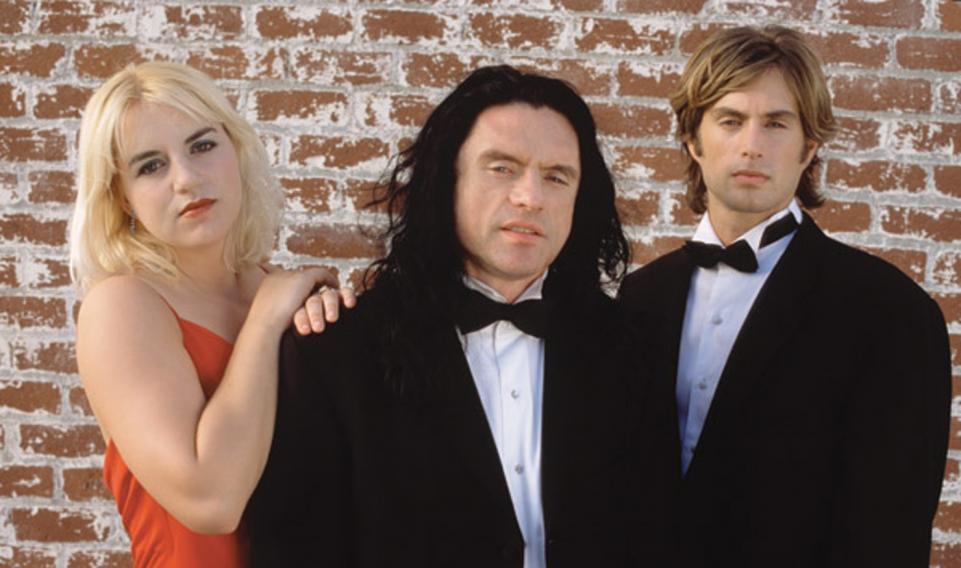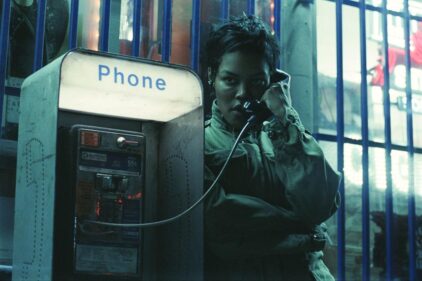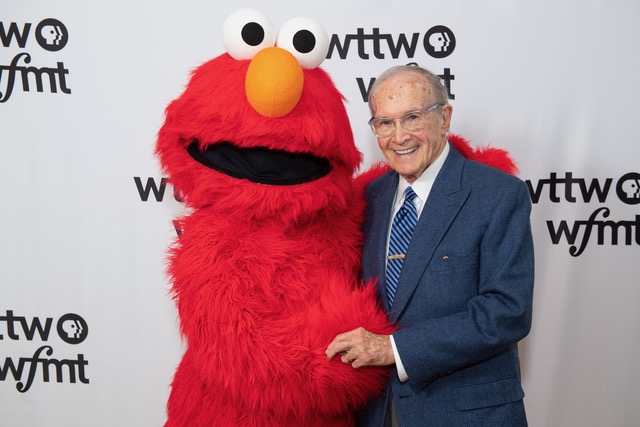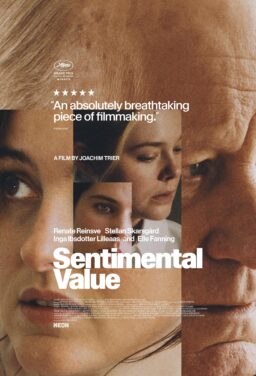Do you recall the scene in “300” in which enemy arrows blot out the sun? The ten screenings of “The Room” I’ve attended have looked something like it, only with a sea of plastic spoons. They’re one element of a larger mayhemic ritual, tossed at the screen en masse every time a framed picture of silverware inexplicably shows up in the home of “all-American” protagonist Johnny (writer-director Tommy Wiseau). The accepted theory is that the set designer forgot to replace the frame’s stock photos with images of real people, which isn’t hard to believe given how inept the whole production feels. “Focus!” the audience yells, every time a character’s face begins to blur. It’s that kind of bad movie, though it certainly isn’t unique in its lack of finesse. What separates “The Room” from its so-bad-it’s-good peers isn’t so much a matter of skill as it is one of narrative perspective. To say the film has issues with women is putting it mildly, priming it for a cult-like following that’s lasted fifteen years. The appeal, as I see it, is the ironic endorsement of the “The Room’s” misogynist undertones, unpackaged by audiences mid-screening as if in an act of rowdy live-criticism and yelled back at the screen in order to confront what the movie has to say—but how does this unspoken social agreement function in the Twitter age, wherein “ironic” bigotry is often indistinguishable from the real thing?
To begin with, these monthly “Room” screenings held in cities across the world necessitate a level of self-regulation, with audience members checking one another on the rare occasion a joke leans too far in the direction of actual sexism (either that or the joke is simply met with silence, which gets the message across). Though it brings to mind a particular dilemma: can one be certain as to whether such a limit is truly agreed upon by the majority? In a space dedicated to experimenting with irony, there seems to be no easy answer, but articulating the question itself feels especially vital. When a form of “ironic” comedy exists to deal with social maladies by embodying their perspective, is there a definite point at which its social contract should end? If so, how should this point be determined?
The women of “The Room” are at once supernaturally manipulative and wholly dependent on men, an absurdly retrograde premise even for a film made in 2003. Shouting down this perspective in a straightforward manner would be easy enough, but sarcasm is the order of the day during these late-night festivities. Wiseau’s Johnny is the center of attention whether he’s on screen or not. If you subscribe to the Bechdel-Wallace Test—“It has to have at least two women in it who talk to each other about something besides a man”—“The Room” passes it only because the antagonist’s mother casually reveals she has breast cancer and never mentions it again. This is one of several strange chats between femme fatale Lisa and matriarch Claudette, with one exchange in particular acting as the point of crystallization for the event’s ironic chants. See, Lisa is cheating on her saintly fiancé Johnny with his best friend Mark (also presented as a victim in this scenario), so Claudette tries to talk some sense into her. “He supports you,” She begins. “He provides for you. And darling, you can’t support yourself.”
“Because you’re a woman!” the audience responds in unison, as if to speak the subtext the film is afraid to make textual.
I wouldn’t blame anyone for being turned off by this description. The screenings tend to be male-heavy in attendance, although in my experience women audience members often lead the charge, with sarcastic exclamations of “Ugh, women, am I right?” each time Johnny or Mark tie Lisa’s transgressions to her femininity. For some, the screenings seem like an excuse to revel in familiar sleights. For others, they’re ritualistic reckoning. Either way, James Franco’s recently released Wiseau biopic “The Disaster Artist” is going to help increase demand for these events. They’re usually held monthly, but they became a weekly affair just this month, and the film has even been slated for its first nationwide release, playing on over 600 screens on January 10th. As the cinematic ceremony gains mainstream prominence, examination feels especially warranted.
An issue with ironic bigotry (or as it’s known on the internet, “It’s satire, bro”) is that it’s often self-serving. When tone might be lost to text-based communication, a message or a tweet attempting to lamp-shade a form of discrimination can come off as the very thing it’s skewering. Such is often the case in real life. Comedian David Cross for instance, a pioneer of the “anti-comedy” movement of the ‘90s, claims an impersonation of a racist as the reason writer Charlyne Yi was offended by his comments, though some would argue the intent is irrelevant when you’re hurling slurs at a stranger. Satire is a fine line only a few are adept at walking, though with artistic and interpersonal contracts being understood rather than written, there’s sure to be a ruffling of feathers when establishing their boundaries.
In 2014, the tone-deaf creation of the Washington Redskins Original Americans Foundation amidst the debate over racist NFL team names was followed by the official “Colbert Report” Twitter account’s attempt to satirize it: “I am willing to show #Asian community I care by introducing the Ching-Chong Ding-Dong Foundation for Sensitivity to Orientals or Whatever.” While the response from Asian American writer Suey Park was considered misguided—her “#CancelColbert” movement began before she was aware of the context of the tweet—it provided a platform similar to that of her previous #NotYourAsianSidekick hashtag lambasting tokenism. #CancelColbert became both an example of the reactionary nature of Twitter critique, as well an outlet through which to discuss the prominence of white comedians mocking people of colour in the name of mocking racial stereotypes. In effect, both the joke and the criticism of the joke were aimed at making a similar point.

Does this dynamic apply to screenings of “The Room”? Perhaps. The optics of a male writer delighting in the beration of women, ironically or otherwise, are not lost on me, and introspection of the male perspectives that led to everything from “The Room” to a culture complicit in Harvey Weinstein seems especially crucial in—drum roll please—the age of Trump. Archaic ritualism and an adherence to “just the way things are” are exactly what got us here, and a media fandom that refuses to examine its biases as time charges forward is symptomatic of a larger cultural problem. At what point are we complicit in perpetuating that which we’re speaking out against?
Sarah Silverman’s provocative 2005 concert film “Jesus is Magic,” a product of its era, was originally describes as having been “delivered through enough layers of self-consciousness — air quotes wrapped in air quotes — to make anyone who finds it offensive look like a sucker” by critic A.O. Scott. While Silverman’s special is not without merit as a litmus test for sensibilities, it now reads specifically like a shielded form of self-reflexive irony, the kind used to deflect any and all criticism when there’s a disconnect between intent and effect. “Most of the humor in ‘Jesus Is Magic’,” Scott continues, “depends on the scandal of hearing a nice, middle-class Jewish girl make jokes about rape, anal sex, the Holocaust and AIDS… But Ms. Silverman is not smashing taboos so much as she is desperately searching for them.” What comes off as “edgy” and familiar in an almost juvenile sense today was even described by Scott as “playing it safe” in 2005, though with the passage of time and the evolution of social sensibilities, Silverman herself seems to disagree now that she’s experimented with pushing all those buttons. When asked about “Jesus is Magic” just last month, she said:
“Comedy is not evergreen! There are jokes I made 15 years ago that I would absolutely not make today… Just cos I am liberal and I say I’m making a character study of an ignorant person – the intention was good, but whatever. Now I know more about this phrase ‘the liberal bubble’, I know that saying ‘I’m not racist, so I can be racist to show racism’… well social media taught me that racism doesn’t need me to help people understand racism, because it’s everywhere.”
What separates “The Room” from a stand-up special like “Jesus is Magic” however is that while the films themselves remain time-capsules of early 2000s, the ritual surrounding the “The Room” is in constant flux, updating itself year after year through cultural osmosis. Which isn’t to say the screenings have a “Get out of Criticism Free” card, but rather that understanding and delving into their mechanics is the very thing that helps keep them current. Newcomers are inducted into the “fandom” by first observing how more experienced Room-goers conduct themselves. By the time a novice goes on to introduce the film to someone else, the latest version of the screening software has been downloaded into the collective consciousness.

In 2014, shortly after the beginning of “GamerGate”—an online hate movement targeting women and minorities under the guise of critiquing video game journalism—New York chapters of the screenings began to incorporate the various phrases associated with the movement. “It’s about ethics in games journalism!” would be yelled by men and women alike anytime a male character lamented the negative effects of women in his life (Either that or simply chanting “Game! Er! Gate!”). These screenings are populated by people in their twenties and thirties, a demographic constantly clued in to internet culture and thus either witnessing or being a part of the collateral damage of online harassment. I can attest to this being the case within my regular “Room” group, though the circle in which GamerGate jokes function is still a relatively small one, while that of “The Room” widens year after year.
This past November in New York, I attended my first screening in over a year, and my first since the 2016 U.S. election. It was also amid the (still ongoing) domino effect of the Weinstein scandal, and not long after numerous #MeToo posts had flooded social media. I had an inkling that these seismic cultural shifts would affect how the screening was perceived—would this be some sort of breaking point, I wondered—but the ritual had since evolved once again to accommodate this rapidly altered climate, with unexpected hilarity. Claudette, a pant-suited character with short blond hair, had now become an avatar for Hillary Clinton.
Instead of primarily endorsing the sexism of video game “activists,” the audience had now stepped into the shoes of Clinton’s far-right detractors. While the familiar elements remained—speaking lines like “Oh hi, Mark!” along with Johnny, asking why his TV is behind his couch, and the various exclamations of “Because you’re a woman!”—this new facet involved responding to Claudette cleaning up Lisa’s apartment with accusatory suggestions to “Clean up [her] emails!” Buzzwords like “Benghazi!” and “Lock her up!” made appearances at inopportune moments, retrofitting illogical elements of contemporary politics into the pre-existing viewpoints of a fourteen-year-old film. The result was collective catharsis, highlighting the sheer absurdity of a modern political climate that exists in part as a result of rejecting women.
There will always need to be conversations about these limits, both as the cultural climate evolves and as we evolve alongside it, but the common understanding that separates “The Room” screenings from your run-of-the-mill, haphazardly considered “ironic discrimination,” online or otherwise, is the end-goal. Where the latter is aimed at alleviating guilt and separating oneself from the problem, the result is effectively discrimination itself. The screenings however are more akin to collectively dancing around a cinematic campfire and taking agreed-upon shots at a film rife with implicit gender bias—rather than taking shots at actual people and hoping they know your intent.
These elements of the screenings began with pointing out “The Room’s” penchant for painting women as evil and incapable. As the specific manifestation of the film’s worldview slips further into antiquity (liberal city audiences are more supportive of women’s financial and sexual autonomy, one would hope!), rather than treating its outlook as a harmless artifact of a bygone era, audiences continue to contend with its modern, more insidious manifestations as they enter the social spotlight. In the process, the monthly midnight screenings allow the film to be a blank screen on which to project the most recent absurdities of the collective culture, taking them to task while testing ever-changing boundaries. As the ritual shifts, so does the line. As the line shifts, so does the ritual. An experimental feedback-loop of ironic offense, housed in a space of mutual understanding wherein hundreds of strangers gather to self-regulate the limits of the unacceptable, shaming it with a flurry of spoons.











